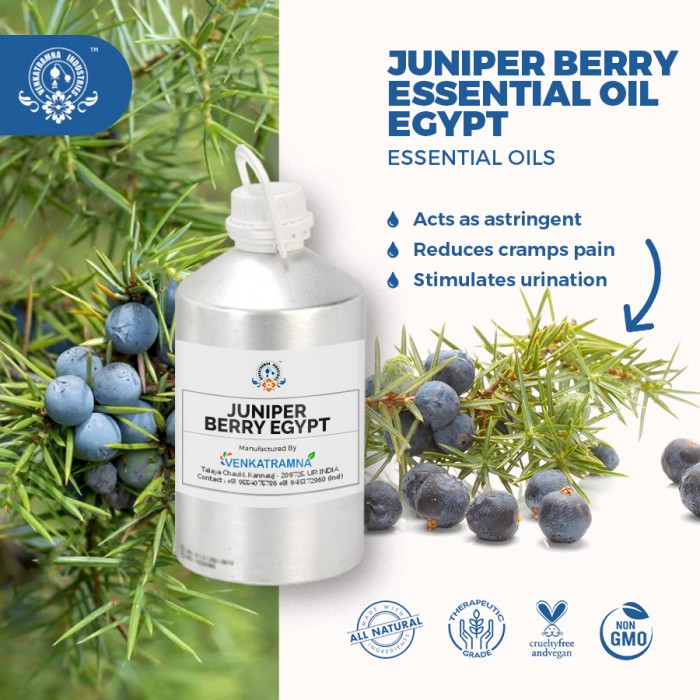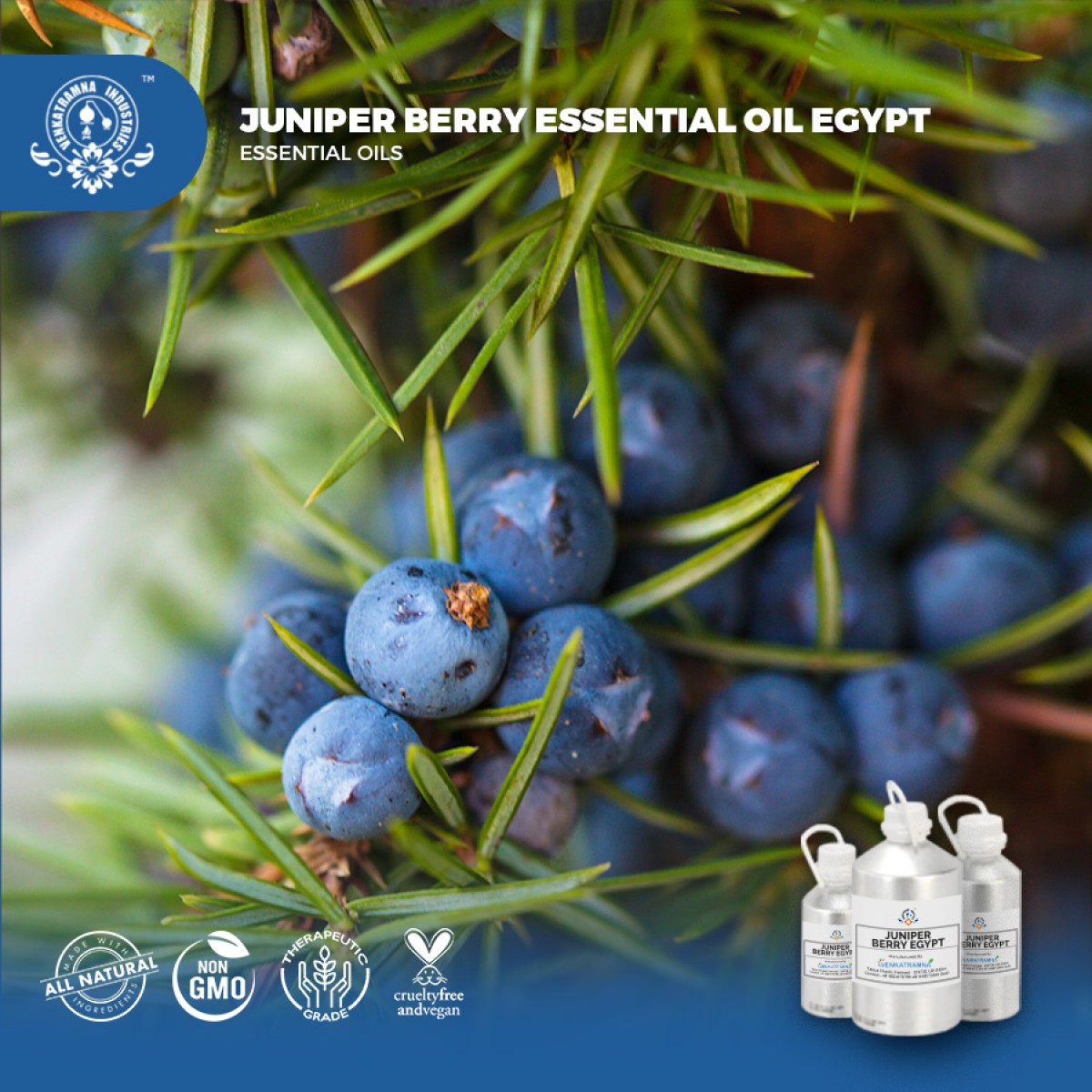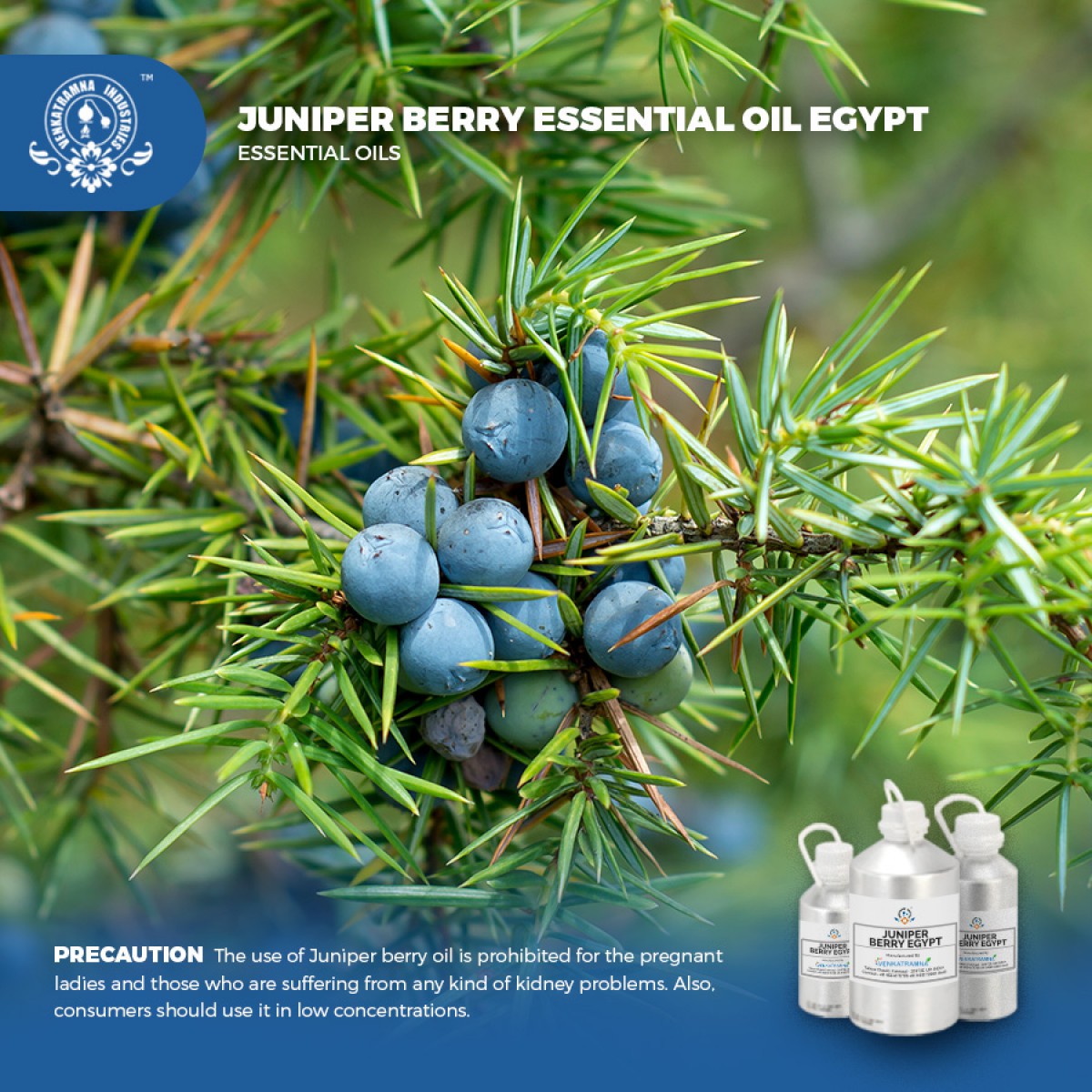Botanical Name: Phoenicean juniper Common name: Phoenicean juniper Pl Read More
|
Botanical Name: |
Phoenicean juniper |
|
Common name: |
Phoenicean juniper |
|
Plant family: |
Cupressaceae |
|
Genus: |
Phoenicean |
|
Appearance/Color: |
Colorless to
pale yellow liquid with thin consistency |
|
Odor: |
Medium fresh rich
balsamic scent similar to pine needles |
|
Blends With: |
Chamomile,
Eucalyptus, Marjoram, Rosemary, Bergamot, Geranium, Clary and Sandalwood |
|
Origin: |
Egypt |
|
Source: |
Berries |
|
Method of
Extraction: |
Steam Distillation |
Juniper berry essential oil is
the abstract of fresh & dried berries and leaves of Juniperus plant
species. These plants are well-known as the powerful immunity booster and
detoxifier. These attributes make the essential oils more effective.
The colours of the
berries differ in various species; in some, they are red-brown or orange but in
most they are blue. Each juniper berry contains a resin (10 per cent), an
essential oil (juniper berry oil, 0.5-2 per cent) with pinene and borneol,
inositol, a flavonoid glycoside and a bitter compound (juniperin) which make it
a rich source of aroma. Usually, the male and female flowers grow on different
trees and only trees with female flowers bear fruit. The seed maturation time
varies between species from6-18 months after pollination. The juniper berry
takes two or three years to ripen, so that blue and green berries occur on the
same plant. Only blue ripe berries are hand-picked and steam distilled to
obtain juniper berry essential oil.
We produce pure and fine quality Juniper berry essential oil by the process of steam distillation of high-quality Juniper berries.
DISCLAIMER
The complete range of conditions
or methods of use are beyond our control therefore we do not assume any
responsibility and expressly disclaim any liability for any use of this
product. Information contained herein is believed to be true and accurate however,
all statements or suggestions are made without warranty, expressed or implied,
regarding accuracy of the information, the hazards connected with the use of
the material or the results to be obtained from the use thereof. Compliance
with all applicable federal, state, and local laws and local regulations
remains the responsibility of the user.
The FDA has not evaluated the
statements on this website. No claims are made by Venkatramna Industries as to
the medicinal value of any products from vriaroma.com or by us. The information
presented here is for educating our customers about the traditional uses of
essential oils and is not intended to diagnose, treat, cure, or prevent any
disease. You are responsible for understanding the safe application of these products.
If you have any questions, please call or email us for further information.
As per NAHA guidelines, New Directions Aromatics
(NDA) does not recommend the ingestion of essential oils. It is imperative to
consult a medical practitioner before using Essential Oils for therapeutic
purposes. Pregnant and nursing women and those taking prescription drugs are
especially advised not to use this product without the medical advice of a
physician. The oil should always be stored in an area that is inaccessible to
children, especially those under the age of 7.
Juniper berry is a powerful source of
medicinal benefits itself. This makes the juniper essential oil most used in
curing respiratory disorders and for sore throat also. Juniper
is used for digestion problems including upset stomach, intestinal
gas (flatulence), heartburn, bloating, and loss of appetite, as well
as gastrointestinal (GI) infections and intestinal worms. It is also
used for urinary tract infections (UTIs)
and kidney and bladder stones. Other uses include treating
snakebite, diabetes, and cancer.
Some people apply
juniper directly to the skin for wounds and for pain in
joints and muscles. The essential oil of juniper is inhaled to
treat bronchitis and numb pain. In foods, the juniper berry
is often used as a condiment and a flavouring ingredient in gin and bitter
preparations. The extract and essential oil are used as a flavouring ingredient
in foods and beverages.
Juniper
Berry essential oil Egypt in Pharma
Research says that this powerful
oil has around 87 active constituent compounds which include antibacterial,
antioxidants and antifungals. The oil is 100% pure and offers a variety of
health benefits. Further, people find the range suitable to soothe skin, boosts
the immune system, aids in digestion and help in insomnia. In manufacturing, the juniper oil is used as a fragrance
in soaps and cosmetics.
Essence
of Juniper Berry essential oil Egypt
It
has a best aroma and medicinal properties that can heal pains in muscles and
arthritis. Juniper extract and juniper oil are used
in cosmetics including lipstick, foundation, hair conditioners, bath oils,
bubble bath, eye shadow, and many other products.
COMMON USAGE
·
Fights against Arthritis
·
Prevents sepsis
·
Acts as astringent
·
Reduces cramps pain
·
Stimulates urination
·
Disinfects blood
·
Works as Carminative agent
·
Has Rubefacient property
·
Open pores and promotes sweating
·
Helps in treating stomach ailments
·
Works as a tonic
·
Works as stimulator
·
Heals wounds by Fastening healing process
Ingredients:
|
S.No |
Key Constituents |
Strength (%) |
|
1 |
b-Phellandrene |
3.5–5.9 |
|
2 |
a-Pinene |
41.8–53.5 |
|
3 |
Manoyl oxide tr |
14.4 |
|
4 |
(þ)-Limonene tr |
4.7 |
|
5 |
a-Terpinyl acetate |
0–4.6 |
|
6 |
b-Myrcene |
4.0–4.5 |
|
7 |
Isopulegyl
acetate |
0–3.3 |
|
8 |
b-Pinene |
1.3–2.5 |
|
9 |
a-Terpineol |
0.8–2.5 |
|
10 |
1-epi-Cubenol |
0–2.3 |
|
11 |
Linalyl acetate |
0–2.0 |
|
12 |
d-3-Carene |
0–1.7 |
|
13 |
Isopulegol tr |
1.6 |
|
14 |
Terpinolene |
0.6–1.3 |
|
15 |
Linalool |
0.7–1.3 |
|
16 |
d-Cadinene tr |
1.3 |
|
17 |
Elemol |
0–1.2 |
|
18 |
b-Caryophyllene |
0.5–1.0 |
|
19 |
Terpinen-4-ol tr |
1.3 |
TOXICOLOGICAL
INFORMATION
Safety summary
Use of Juniper berry oil is
prohibited for the pregnant ladies and those who are suffering from any kind of
kidney problems. Also, consumers should use it in low concentrations.
Organ-specific effects: no data available
Systemic effects
·
Acute toxicity: Harmful if swallowed
·
Skin corrosion/irritation: May be
irritating to skin.
·
Serious eye damage/irritation: Not
specified
·
Respiratory sensitization: may cause allergic
skin reaction
·
Germ cell mutagenicity: Not specified
·
Carcinogenicity: not specified
·
Reproductive toxicity: Not specified
·
STOT-single exposure: Not specified
·
STOT-related exposure: Not specified
·
Phototoxicity: no data available
· Aspiration hazard: may be fatal if swallowed or enters air ways.
ECOLOGICAL
INFORMATION
·
Aquatic Toxicity: toxic to aquatic life with long lasting
effects
·
Bioaccumulation: No data available
·
Mobility in soil: No data available
·
Persistence and degradability: No data available
·
PBT and vPvB assessment: No data available
·
Other adverse effects: Do not allow it to enter
into water systems and marine environment.





 MSDS-Juniper.pdf
MSDS-Juniper.pdf




